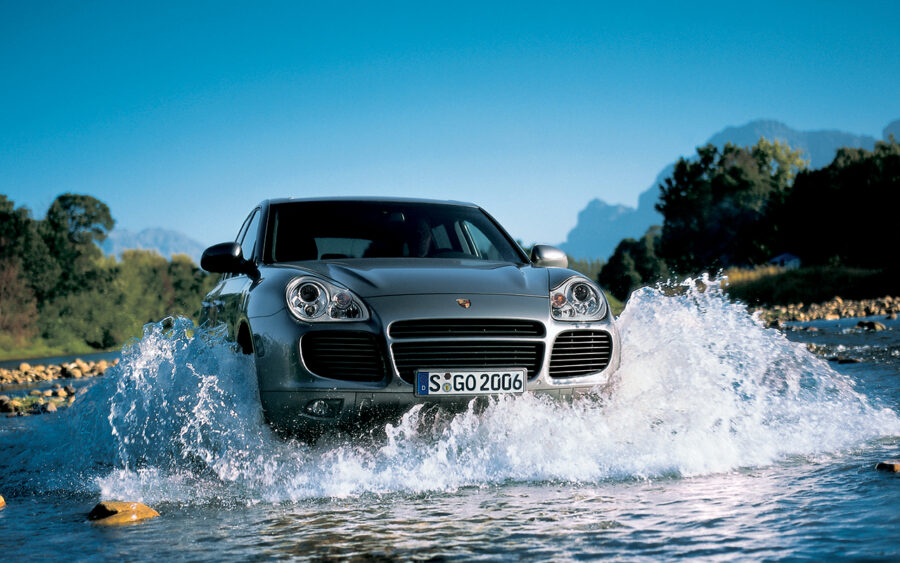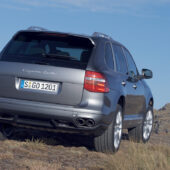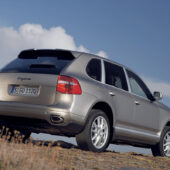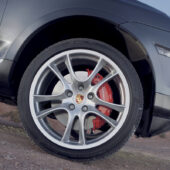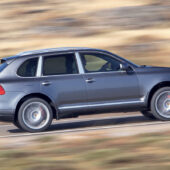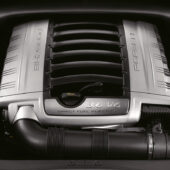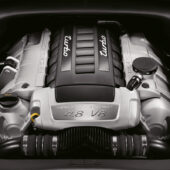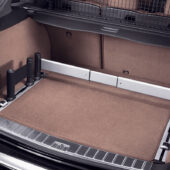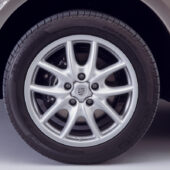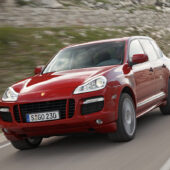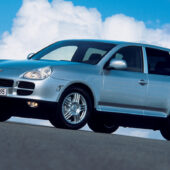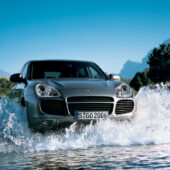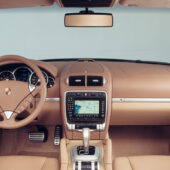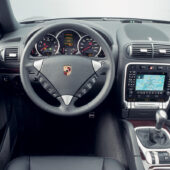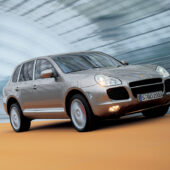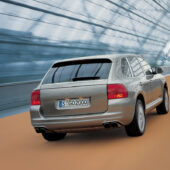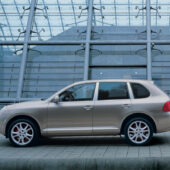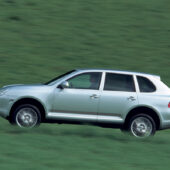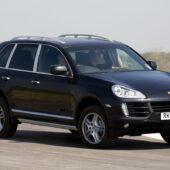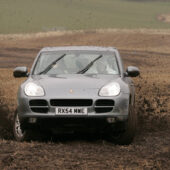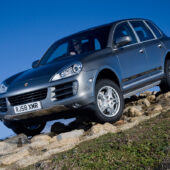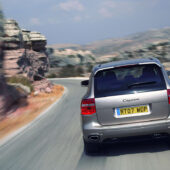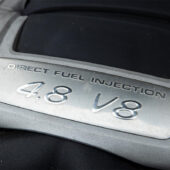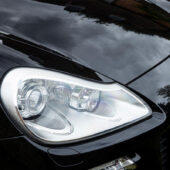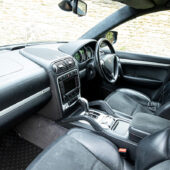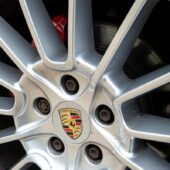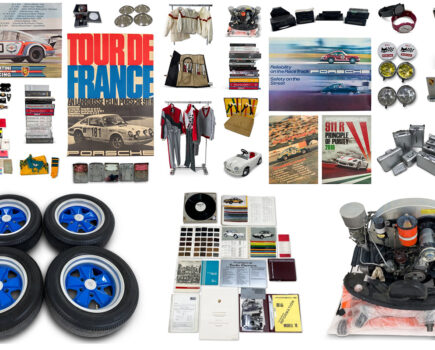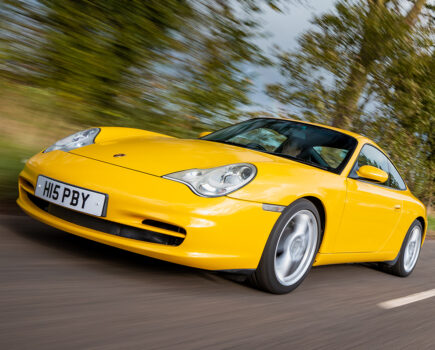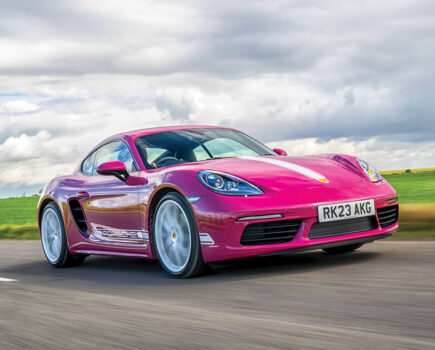Porsche’s first foray into the SUV market may have been a fancy VW underneath but makes an intriguing alternative to a Range Rover. Here’s how to buy one
Words: Paul Wager Images: Porsche
In today’s automotive landscape, you’re not a serious player without an SUV in your range – but back in 2002 things were less clear-cut, making the Cayenne the most controversial Porsche to date.
Just how worried Stuttgart top brass were at the enforced dilution of their pure-bred sports car philosophy is obvious from the pre-launch advertising campaign. Using imagery of the Paris-Dakar winning Porsche 959, the advert announced “At this moment we are testing a five-seater version of this idea. The Cayenne is on its way.”
The phrase ‘a real Porsche’ also appears anxiously several times in the early press releases, Dr Ing HCF Porsche AG conveniently forgetting that the Cayenne owed more to the larger VW Group than even the Audi-derived 924 of the 1970s. Like the 924, the VW Group ‘PL71’ platform was developed by Porsche at its Weissach R&D centre for use under Porsche, VW and Audi brands.
For despite the 911-esque lamps awkwardly grafted on to the nose, the Cayenne was under the skin essentially a VW Touareg which in turn also formed the basis for the Audi Q7.
Launched in 2002, the Porsche Cayenne was initially offered only in petrol-fuelled V8 form as the 340bhp Cayenne S and the 450bhp Cayenne Turbo, both using a Porsche-built dry-sump 4.5-litre V8.
Both were available in six-speed manual or automatic form and all models featured a rear-biased permanent four-wheel drive, backed up with Porsche’s electronic ‘Porsche Traction Management’ system which used a multi-plate clutch and electronic differentials to continually distribute power to the wheel with the most grip.
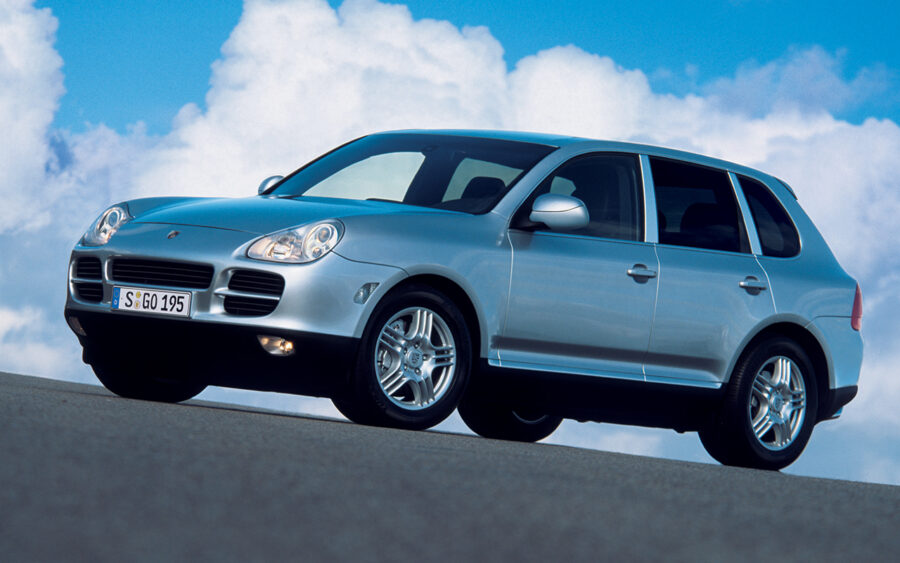
The Cayenne Turbo and S, known internally as Porsche Type 955, went on sale in the UK from 2002 and the following year the V8 was joined by a six-cylinder model using the VW Group’s 3.2-litre VR6 engine – whimsically referred to by Porsche as coming ‘from an outside supplier’. With inlet manifolds modified by Porsche, the engine was good for 250bhp and was offered initially only as a Tiptronic automatic with a manual added in early 2004.
In 2006, a Turbo S model was added to the range packing 521bhp, with both the turbocharged V8s upgraded in 2007 to 4.8 litres, lifting the Turbo to 500bhp and the Turbo S to 521bhp.
The Cayenne was facelifted at the same time, gaining a new Porsche Type number 957 as well as revised bonnet, bumper, wings and more neatly integrated lamps. At this point the V6 was enlarged to 3.6 litres and 290bhp.
November 2009 saw the GTS model added, based on the non-turbo 4.8-litre V8 but with direct injection lifting power to 405bhp and featuring flared arches, intake scoops, sports suspension and 21-inch wheels.
In February 2009, the Cayenne range gained diesel power, courtesy of the VW Group’s 3-litre V6 TDI engine, rated at 240bhp.
In December 2009, production of the first-generation E1 model at Porsche’s Leipzig plant ended, with the second-generation E2 model launched in April 2010, again closely based on its VW and Audi siblings.
Today the first-generation Cayenne represents incredible value, with the entry ticket currently hovering around £3000 but as ever with an ageing prestige car, the wrong one can be an expensive proposition. Here’s what you need to know.
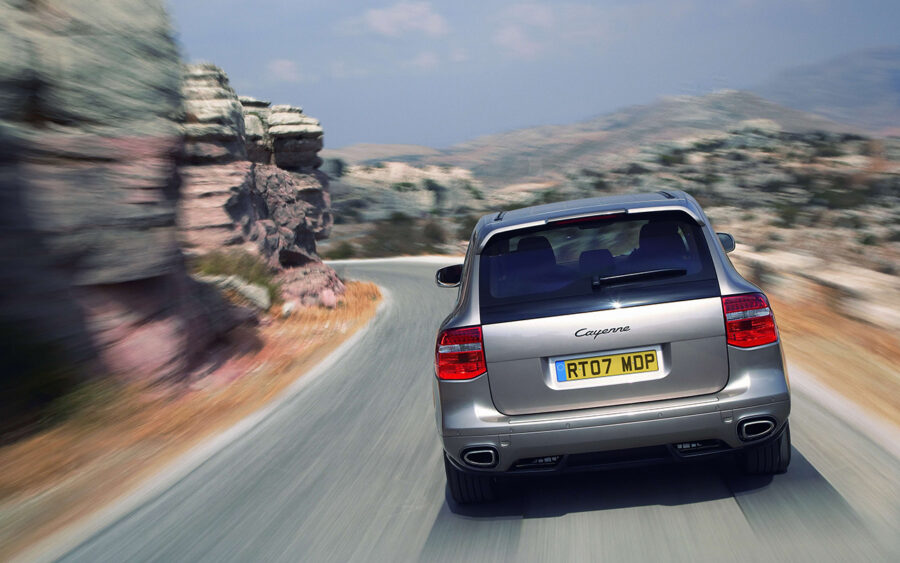
Bodywork
All Cayennes were built using galvanised bodyshells so despite their age, well cared-for examples should still be very presentable and you’re on the look-out for damage rather than corrosion.
Despite its on-road bias, the Cayenne was surprisingly capable off the tarmac so it’s worth at least a look underneath to check for off-roading damage. They’re good to tow 3.5 tonnes and cars with a tow hitch may have seen a fair bit of heavy horsebox action too, so check for general wear and tear.
The cost of bringing tatty examples up to scratch can mount up, so make a good assessment of the general appearance: good used door mirrors are around £100 each, while a split plastic bumper will cost around £200 to fix with a used replacement.
Halogen headlamps will set you back around £150, but the HID units are about £250 each for used items.

Engine and gearbox
For the full-fat Cayenne experience you’ll want the V8, but it comes with a few issues. The 4.5-litre non-turbo unit is known to suffer with issues around the Lokasil-coated cylinder liners, which can become scored or fail entirely – both leading to major engine failure. A lack of compression, appetite for oil and an engine tick is the initial result but it can get much worse very quickly.
The V8 can also suffer from collapsing coolant pipes, which are hidden in the vee of the engine and difficult to access. Alloy aftermarket replacements are available, but replacing the pipes is roughly a £1500 job in a workshop. If you smell coolant, suspect the car has this issue.
Misfiring and a ‘check engine’ light can be caused by failed coil packs, but they’re cheaper than they once were at around £40 so this can be an easy fix.
In contrast, the V6 unit is generally reliable, although it doesn’t offer the same blistering pace.

The good news is that the post-2007 4.8-litre V8 doesn’t suffer from the same issues, while the 4.5-litre Turbo used a Nikasil bore coating rather than Lokasil which doesn’t suffer the issue so if your budget stretches that far then it’s a neat way to avoid the problem.
The choice of engine may ultimately be down to other factors though: the V8 is good for a realistic best of 19mpg, the Turbo can dip into single figures but the V6 can be coaxed to 30mpg.
Both manual and automatic units are sourced from ZF and are reliable, as is the rest of the drivetrain. Manual cars are relatively rare, but drive a couple to get a feel for them as a heavy clutch action was standard. Make sure the automatic shifts from drive to reverse cleanly and that the shifts are smooth. In extreme cases the unit will snatch as it loses drive momentarily, which is a sign that the valve block has gummed up. An oil change might just fix it, but it might mean a replacement ‘box.
Suspension, steering and brakes
Air suspension was an option on all models but standard on the Turbo and here you have a dilemma: the coil-sprung cars are less complex with little to go wrong, but the ride is considered harsh compared to the air system.
Air springs can collapse and are about £150 for aftermarket parts or around £100 for used original items. Check the car sits level, while a continually running compressor is a sign that the system is leaking. A frequently flashing warning light means either the system is losing air or the compressor is getting lazy, but aftermarket units are available at around £120.
These are big heavy cars which tend to get driven hard and the brakes are impressive but take a beating. Budget on around £110 for a set of front pads and £300 or so for a pair of Brembo discs for the V8. ABS wheel sensors are around £70 each.
The ABS control module lives in the scuttle tray, which can fill with water when the drains become blocked, with predictable results.

Interior and electrics
As expected from a car at this level, the 955 Cayenne came loaded with luxury kit but not all of it was reliable, with the air conditioning a common failure on early cars.
Check everything works properly and check for damp caused by a fractured rear screenwash pipe – it runs up the offside A-post. The main fuse box also lives in the scuttle tray and electrical gremlins will be dire if it gets damp.
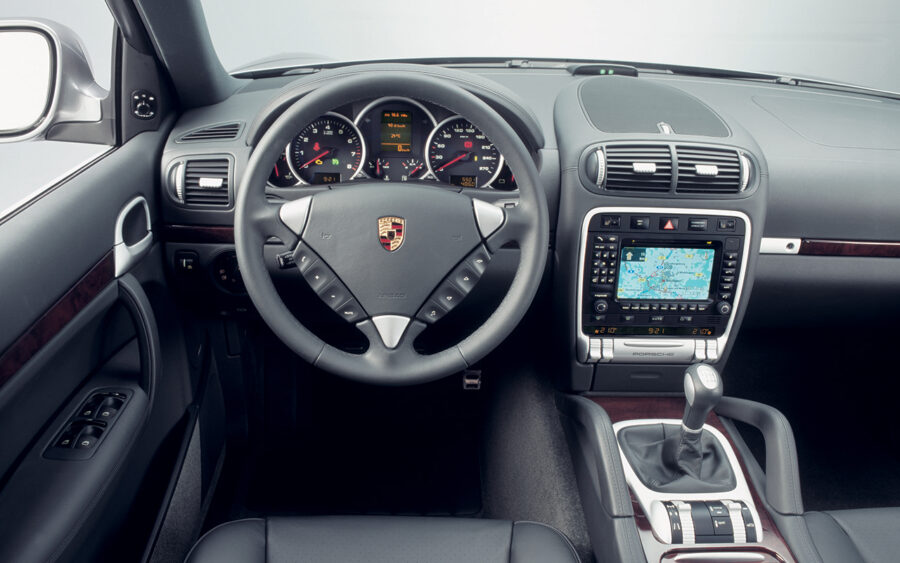
Porsche Cayenne (E1): our verdict
A large, thirsty, fast SUV isn’t the most socially acceptable car these days but there’s no denying just how impressive the Cayenne is. Large, heavy and comfortable yet still somehow imbued with Porsche’s trademark driver appeal, it’s a fine choice today if you can afford the associated fuel bills and upkeep.
Early high-mileage examples of the Cayenne can be had surprisingly cheaply, with prices for a useable example starting at around £3,000. You might just get lucky at this price level but it’s unlikely, making it sensible to budget around the £5000–7000 level; at this point you have a great choice of Cayenne models and engines, with many dipping below the 100,000-mile mark.
At around £6500 the Turbo comes into range and its fuel economy means it doesn’t command the premium you might expect.
Low-mileage examples will command £12,000–15,000, with the top whack for the first-gen Cayenne around the £20,000 mark. At this price level though, it makes sense to go for the post-2007 facelifted car with the 3.6-litre V6 or more reliable 4.8-litre V8.

